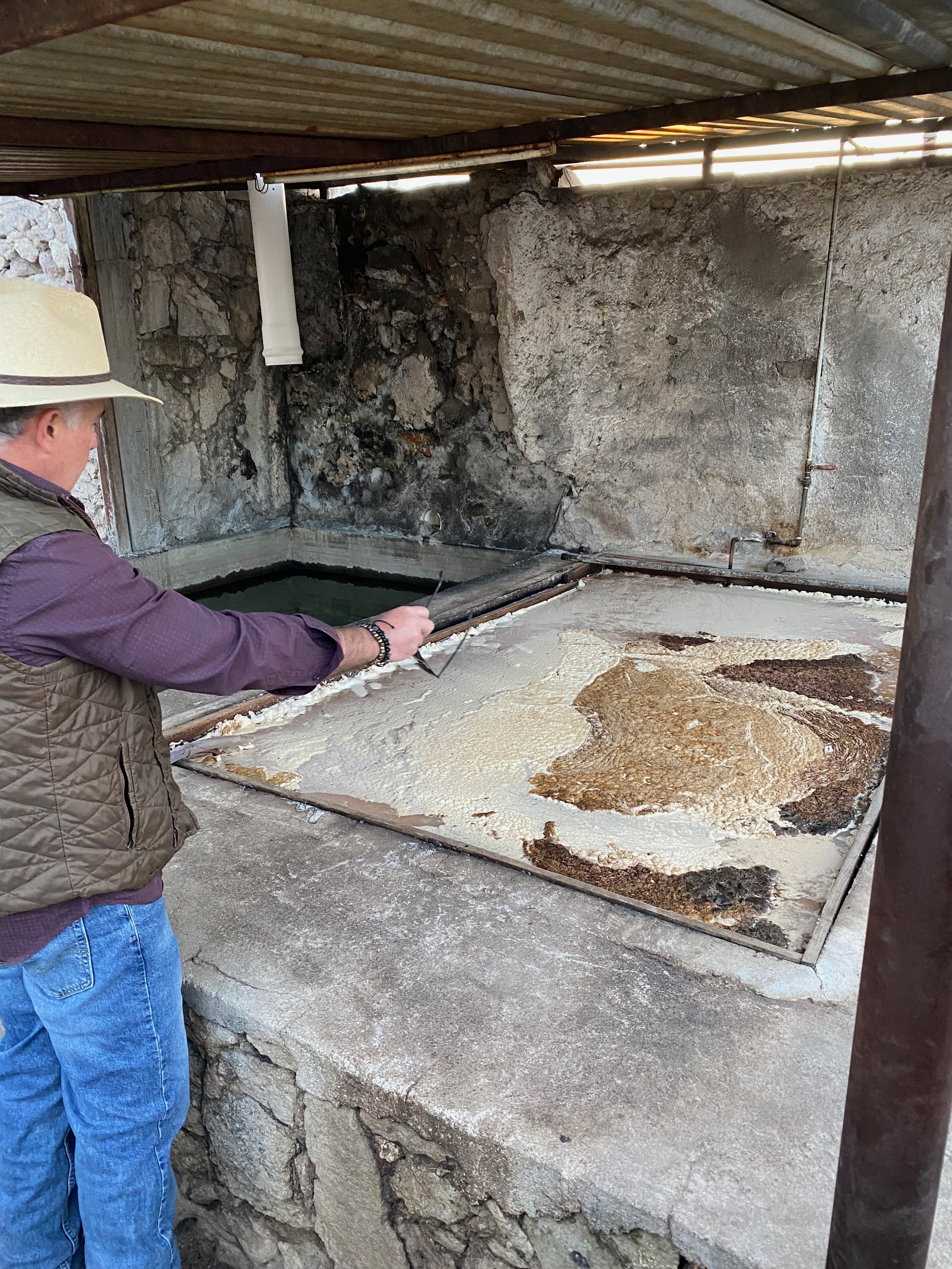bruto y cimarron - san felipe, Guanajuato
Batch: GUA-PV-01
Release date: April 2025
In central Mexico, north of Mexico City, in the north-west part of the state of Guanajuato, sits the municipality of San Felipe. It’s here that Pedro Valdes continues a tradition begun 4 generations ago on his wife Malena’s side of the family.
We’re honoured to bring the families work to the market and share their story here. This release will be the first ever agave spirit from Guanajuato made available in the UK.
Unlike down south in Oaxaca where there’s an enormous range of different agave growing prolifically, here in central Mexico the hills are dominated pretty much exclusively by Salmiana. But of course it’s not that simple. There’s various sub-species with different appearances and characteristics, as well as different names between communities.
To illustrate this point, and the diversity inherent even within one family of agave, this releases was paired with another Salmiana from nearby San Luis Potosí, batch SLP-MN-01.
For this ensemble Pedro used a roughly equal number of maguey Bruto and maguey Cimarron from the Sierra de Guanajuato.
In other regions, notably the state of Michoacán, the maguey name Bruto would refer to agave Inaequidens. Meanwhile the name Cimarron might in Jalisco be a local name for agave Angustifolia. But here in Guanajuato they’re both sub-species of Salmiana.
Maguey Bruto
Maguey Cimarron
The cooking process here happens above ground, and with steam. This is how it’s been done here since Mexico’s Hacienda days. In fact, Malena’s grandfather was the last Mezcalero of a large hacienda in the region called Hacienda del Jaral de Berrios.
Malena’s great grandfather at the Hacienda Caldera in 1936
Pedro has adapted the same caldera used for his oven to also be the heat source for distillation in his impressive copper stills.
Salmiana piñas waiting for the steam room
In that last video you can see the sticky liquid from the agave in the steamer seeping out of the door and pooling in the ground. This is the miel amarga (or bitter honey) that’s collected, heated to double concentration, and then added to the roasted agave for fermentation.
Around 10% of the overall volume at the start of the fermentation process is this concentrated bitter agave honey. This is a process we’ve never seen before that is said to be unique to this community and one other nearby.
Steam rises from the oven
Milling
Ferment
Pedro explaining his unique ferment
These Guanajuato stills are tricky to understand. But essentially they function as a copper alembic, through which a double pass is made. The really smart thing is the fact they’re powered by the steam from the caldera - no wood used here!
Gracias Pedro y familia
Melana’s great grandfather
Using the same caldera today
Tasting notes:
Nose: Absolutely fascinating from first nose. Unlike any agave spirit we’ve had before. Very green and fresh but with something making it feel restrained and refined, which we can only assume is the effect of the miel amarga in the ferment. No smoke here, why would there be - there was no wood or fire near the agave.
Palate: Classic Salmiana vegetal tone on first sip, but fused with an understated sweetness from the miel amarga. Not unlike the more highly toasted and slightly bitter bits of homemade honeycomb. But not the most burnt bits - the bits that are burnt just right!
Finish: That honeycomb stays a while before allowing a little of those fresh green tones back in for a surprisingly dry finish that leaves you wanting to go round again.
Continue your agave spirits journey via the Mezcal Appreciation Society:
















